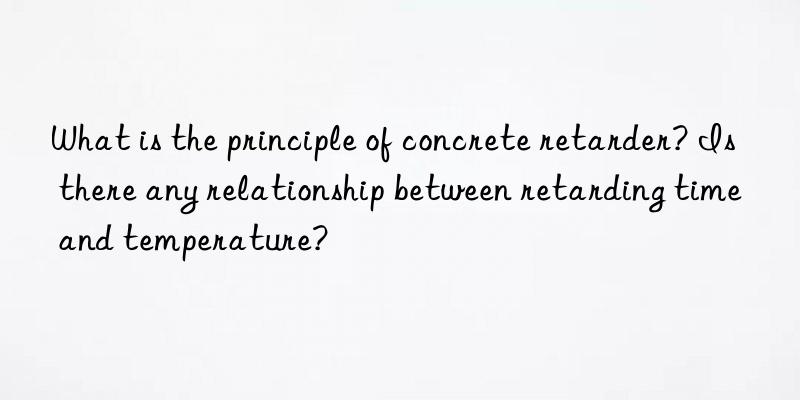
Retarder, Retarder, is an admixture that delays the setting time of concrete without significantly affecting the later strength. The main ingredients are polyhydroxy compounds, hydroxycarboxylates and their derivatives, and high-sugar lignosulfonates. Because they also have water-reducing properties, they are also called retarding water-reducing agents. In addition, some inorganic salts such as zinc chloride, borate, and various phosphates also have a retarding effect.
Retarders are suitable for continuous irrigation under high temperature conditions. construction concrete, mass concrete, ready-mix concrete and pumped concrete.
When the magnesite cementitious material is hydrated, it will release a lot of heat. When the temperature is high in summer, the temperature of some products reaches 80 degrees. When the temperature of the product exceeds The products produced at high temperature will no longer have the 5.1.8 phase, but the very unstable 9.1.5 phase, and the strength is not high. Magnesite products produced when the temperature is too high will have problems such as halogenation, deformation, and low strength. . The current solution is to add a retarder to disperse the heat of hydration and control the setting time.
In 2005, the material industry standard WB/T 1023-2005 of the People's Republic of China was promulgated. The definition of retarder is: one that can delay the setting time of magnesite gelled products. Admixtures.
Function
The purpose of adding retarder to commercial concrete is to prolong the cement The hydration and hardening time allows fresh concrete to maintain plasticity for a longer period of time, thereby adjusting the setting time of fresh concrete.
Testing indicators
Flow rate increase: 8 Initial setting time difference: +60~+120 Compressive strength ratio at 7 days: 120 Compressive strength ratio at 28 days: 120 Softening coefficient: 0.55
</p



 微信扫一扫打赏
微信扫一扫打赏
